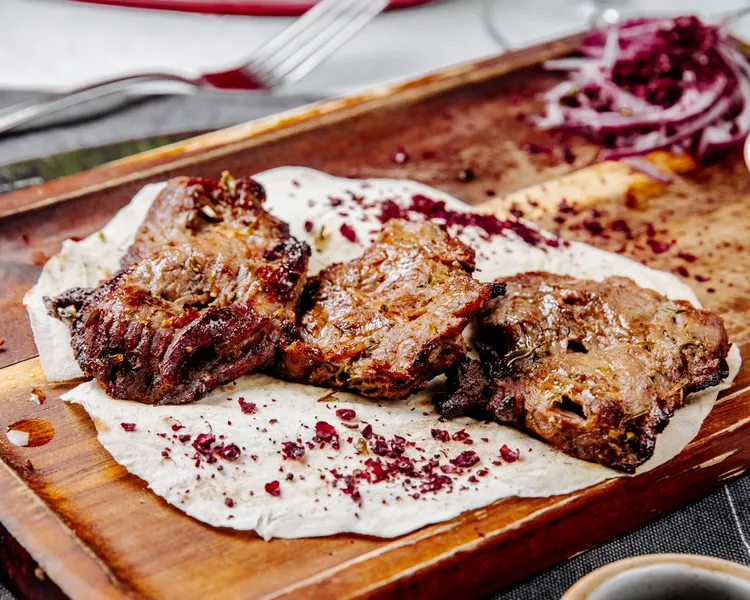Special Diets Made Simple: Your Ultimate Guide to Eating Well
Eating healthy doesn’t have to be complicated - even when you’re following a special diet. With the right guidance, recipes, and meal ideas, you can make any diet simple, sustainable, and delicious. In this guide, we’ll break down some of the most popular special diets, why people follow them, and give you practical ways to get started without stress.The most important part of any diet is that it works for your lifestyle. The key is keeping it simple and sustainable.

Understanding Special Diets: What They Are and Why They Matter
Keto Made Simple
- Weight Loss Made Effortless:By targeting stored fat, many people lose 5-10 pounds in the first week alone. Studies show keto outperforms low-fat diets for sustainable fat reduction.
- Boost Mental Clarity and Focus: Say goodbye to brain fog! Ketones provide a cleaner fuel source for your brain, improving cognitive function and productivity.
- Steady Energy Levels All Day: No more afternoon slumps. The high-fat focus stabilizes blood sugar, giving you consistent vitality without the rollercoaster of carb-heavy meals.
- Additional Health Perks: Beyond the basics, keto may support better blood sugar control, reduced inflammation, and even improved heart health when done right.
If you’re curious about how to start, check out The Complete Beginner’s Guide to Keto (With Sample Recipes) for a step-by-step approach and easy dishes you can try today.
Vegan Eating Without the Stress
Switching to a vegan lifestyle doesn’t have to feel overwhelming. Many people worry that vegan eating means endless meal prep, complicated recipes, or expensive specialty products - but the truth is, vegan eating can be simple, stress-free, and delicious.
Why Stress-Free Vegan Eating Works
Affordable Ingredients: Staples like beans, rice, lentils, oats, and fresh vegetables are budget-friendly and easy to find.
Simple Recipes:You don’t need to be a chef to enjoy tasty plant-based meals. Quick one-pot soups, sheet-pan veggies, and smoothie bowls are easy wins.
Health Benefits: A balanced vegan diet can support heart health, improve energy, and help with digestion.
Vegan eating doesn’t mean giving up your favorite flavors - it means reimagining them in a way that feels lighter, healthier, and kinder to the planet. From creamy vegan pasta to hearty lentil stews, there’s always a quick, satisfying option that fits into your routine.
Need quick dinner ideas? 10 Easy Vegan Dinner Recipes (No Fancy Ingredients) proves that plant-based meals can be affordable, simple, and delicious.
If you’re concerned about protein, you’ll love The Best Plant-Based Protein Sources and Vegan High-Protein Meal Prep for the Week to make sure you stay satisfied and energized.
Gluten-Free Doesn’t Mean Taste-Free
Many people think that going gluten-free means sacrificing flavor, texture, and variety. But the truth is, gluten-free eating can be just as delicious, satisfying, and creative as any other diet. Whether you’re living with celiac disease, gluten sensitivity, or simply choosing to reduce gluten, you don’t have to miss out on your favorite foods.
Why Gluten-Free Can Still Be Flavorful
Wide Variety of Flours - Almond, coconut, oat, rice, and buckwheat flours open the door to incredible baked goods.
Naturally Gluten-Free Foods - Fresh fruits, vegetables, legumes, meats, and dairy are naturally free of gluten.
Improved Food Innovation - Restaurants and grocery stores now offer gluten-free breads, pizzas, pastas, and desserts that taste amazing.
From chewy gluten-free pizza crusts to fudgy brownies, today’s gluten-free recipes prove that you don’t need wheat to enjoy comfort food. By combining whole, nutrient-rich ingredients with creative cooking techniques, you can build a gluten-free lifestyle that’s full of taste and joy.
Remember: Gluten-free doesn’t mean taste-free. It means exploring new flavors, textures, and recipes that make eating fun again.
Our guide Gluten-Free Baking Basics: Tips & Recipes will help you master everything from bread to cookies - without the gluten.
Paleo for a Back-to-Basics Lifestyle
The Paleo diet isn’t just about food - it’s about reconnecting with a simpler, back-to-basics lifestyle. Inspired by the way our ancestors ate, Paleo focuses on whole, unprocessed foods like lean meats, fish, vegetables, fruits, nuts, and seeds. By cutting out processed sugar, grains, and dairy, Paleo encourages a way of eating that feels natural, nourishing, and sustainable.
Why Paleo Fits a Back-to-Basics Approach
Clean, Whole Foods: Paleo meals focus on ingredients you can pronounce and recognize - nothing artificial or overly processed.
Balanced Energy: By avoiding refined carbs and sugar, many people experience more steady energy throughout the day.
Simplicity: No complicated rules or calorie counting - just eat real, nutrient-dense foods.
Alignment with Nature: Paleo embraces seasonal produce and ethically sourced proteins, promoting a more mindful connection with food.
Living Paleo is about more than diet - it’s about slowing down, making intentional choices, and valuing quality over convenience. By embracing the Paleo lifestyle, you reconnect with nature, enjoy food in its purest form, and cultivate habits that support long-term health and vitality.
If you’re looking for a back-to-basics lifestyle that feels nourishing and natural, Paleo might be the perfect fit. Simple, wholesome, and satisfying - just the way eating was meant to be.
Struggling with breakfasts? Try Paleo Breakfast Ideas You’ll Actually Love for easy ways to fuel your mornings.
Low-Carb Living Made Delicious
Living low-carb doesn’t mean giving up flavor, variety, or satisfaction. In fact, low-carb eating can be delicious, energizing, and easy to maintain when you focus on fresh, wholesome ingredients and creative cooking. Whether you’re following keto, Atkins, or simply cutting back on carbs, you can enjoy meals that are both nutrient-rich and mouthwatering.
Why Low-Carb Can Taste Amazing
Rich in Flavor: Healthy fats, herbs, and spices bring bold taste to every dish.
Protein-Packed Meals: Lean meats, fish, eggs, and plant-based proteins keep you full and satisfied.
Endless Variety: From zoodle pasta to cauliflower crust pizza, low-carb swaps open the door to fun and tasty recipes.
Better Energy & Focus: Many people find that reducing carbs helps with steady energy and improved mental clarity.
Low-carb eating isn’t about restriction - it’s about choosing foods that fuel your body and excite your taste buds. With so many delicious low-carb recipes available today, it’s easier than ever to create a lifestyle that’s both healthy and satisfying.
To stay on track between meals, see Low-Carb Snacks That Actually Taste Good for guilt-free munching.
Special diets don’t have to feel restrictive. With the right recipes, meal ideas, and smart swaps, they can become enjoyable, sustainable lifestyles. Whether you’re going keto, vegan, paleo, gluten-free, or simply looking for low-carb options, the key is to keep things simple and focus on foods you actually enjoy.
By starting with approachable recipes and resources, you can build confidence in the kitchen and discover a way of eating that supports your health and fits your life.
Start small: try one new recipe this week, swap one ingredient, or prep a few meals in advance. Over time, those little choices build into healthy habits.
Explore our full library of guides and recipes to make your special diet simple, delicious, and sustainable:









